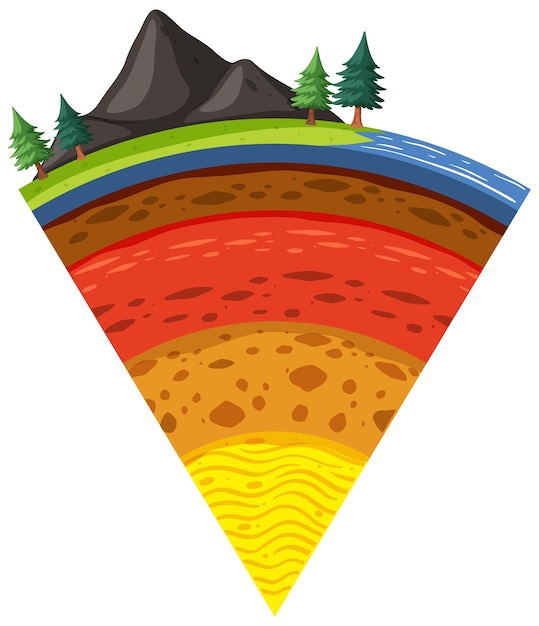Lithosphere Facts – Understanding the Earth’s Solid Outer Layer

The lithosphere is the outermost layer of the Earth’s crust.
It is composed of both continental and oceanic crust.
The lithosphere is composed of several large tectonic plates.
These tectonic plates are constantly moving and interacting with each other.
The lithosphere is responsible for the formation of mountains and valleys.
It plays a crucial role in the Earth’s geological processes.
The lithosphere is made up of various types of rocks, including igneous, sedimentary, and metamorphic rocks.
It can range in thickness from as little as 5 kilometers to up to 100 kilometers.
The lithosphere is divided into several major plates, including the North American, Eurasian, and Pacific plates.
Plate tectonics, which is the study of the movement of these plates, is a fundamental concept in geology.
The lithosphere is constantly changing and evolving due to the movement of tectonic plates.
Earthquakes and volcanic eruptions are common in areas where tectonic plates meet.
The lithosphere not only shapes the Earth’s surface but also influences the climate and weather patterns.
The lithosphere contains a vast amount of natural resources, including minerals, fossil fuels, and precious metals.
The lithosphere acts as a natural carbon sink, absorbing and storing carbon dioxide.
It is home to numerous geological formations, such as canyons, caves, and cliffs.
The lithosphere provides a habitat for various organisms, including plants, animals, and microorganisms.
Lithosphere Facts – Understanding the Earth’s Solid Outer Layer part 2
Rock formations found in the lithosphere can reveal a lot about the Earth’s history and past geological events.
Human activities, such as mining and drilling, can have a significant impact on the lithosphere.
The lithosphere is interconnected with other Earth systems, including the hydrosphere, atmosphere, and biosphere.
The lithosphere plays a crucial role in the water cycle by storing and releasing water through rocks and soil.
It is constantly eroded by external forces, such as wind, water, and ice.
The lithosphere is responsible for the formation of different types of soil.
The lithosphere provides a stable foundation for the construction of buildings and infrastructure.
The lithosphere contains some of the oldest rocks on Earth, dating back billions of years.
The lithosphere is divided into two major types: continental lithosphere and oceanic lithosphere.
Transform boundaries, divergent boundaries, and convergent boundaries are the three main types of plate boundaries found in the lithosphere.
The lithosphere is a dynamic system, where rocks are constantly being formed, destroyed, and transformed.
The lithosphere contributes to the overall stability and balance of the Earth’s crust.
Plate tectonics in the lithosphere can cause the formation of earthquakes and tsunamis.
The lithosphere is affected by the Earth’s internal heat, which drives the movement of tectonic plates.
The lithosphere is closely studied by geologists and seismologists to understand the Earth’s structure and predict natural disasters.
The lithosphere is integral to the Earth’s ecosystem, providing habitats and resources for various organisms.
The lithosphere holds clues to the Earth’s past climate conditions and the presence of ancient life forms.
The lithosphere is subject to constant geological activity, both on the surface and deep within the Earth.
The lithosphere’s composition varies depending on the location, with different types of rocks and minerals present in different regions.
The lithosphere acts as a filter for groundwater, purifying it as it passes through rocks and soil.
The lithosphere’s movement can result in the formation of both new landmasses and the destruction of existing ones.
Plate boundaries in the lithosphere are often characterized by volcanic activity and the formation of volcanic arcs.
The lithosphere’s movement also influences the distribution of plants and animals across the planet.
The lithosphere’s stability and balance are crucial for sustaining life on Earth.
The lithosphere is a testament to the Earth’s complex and dynamic nature.
Changes in the lithosphere can have far-reaching effects on both local and global scales.
The lithosphere is a valuable scientific and educational resource, providing insights into the Earth’s history and processes.
Exploring the lithosphere helps deepen our understanding of the planet we call home.